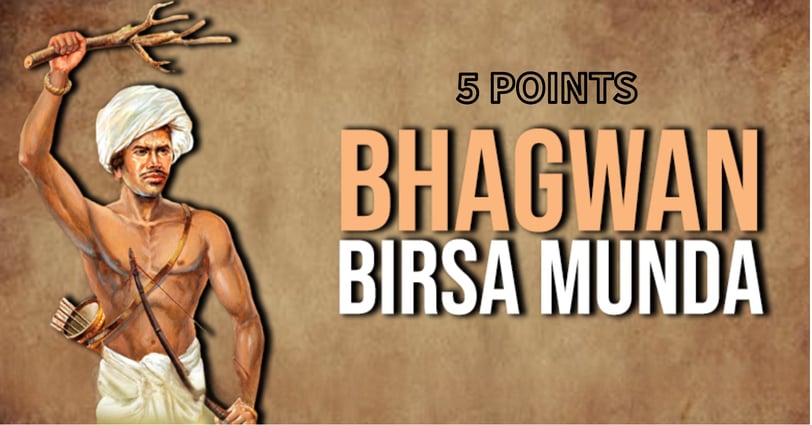
5 IMPORTANT FACTS You Never Knew About BIRSA MUNDA 🌟


Birth and Early Life 🌱: Birsa Munda was born on November 15, 1875, in Ulihatu, near Ranchi. His parents were Sugana Munda and Karmi Hatu. He had an elder brother, Komta Munda, and two elder sisters, Daskir and Champa.
Education and Religious Influence 📚: Birsa received his education in Salga under the guidance of his teacher Jaipal Nag. Later, Birsa converted into a Christian to join the German Mission School but soon dropped out after finding out that the British were aiming to convert tribals to Christianity through education. After dropping out of school, Birsa Munda created a faith called Birsait. Members of the Munda community soon started joining the faith which in turn became a challenge for the British activities.
The Birsa Movement 🚩: The Birsa Munda Movement was a significant tribal uprising in India against British colonial rule. It started as a religious purification movement and eventually turned into a revolt against the British Establishment. This movement can be compared with the contemporary Boxer Revolt of China in 1890.
Phases of the Movement 🔄: The Birsa Munda Movement can be divided into three phases:
Phase - I (1890-1894): In the first phase, Birsa Munda focused on the purification of the members of the Munda Community and to free them from fanaticism, alcoholism, and the practice of animal sacrifices.
Phase - II (1895-97): In this phase, Birsa Munda gathered and united a group of 6000 members of the community in 1895. He later created a faith called ‘Birsait’ and many tribals joined his faith which became a hindrance to British conversion activities.
Phase - III (1898-1900): Birsa became a mass leader and began to be considered Bhagwan and Dharati Aba by his followers. He ignited the minds of the masses- the Mundas, Oraons, other Adivasis and non-Adivasis responded to his call and joined the “Ulgulan” (great tumult) or revolt against the colonial power and exploitative dikus (1899-1900).
Legacy 🏆: His portrait hangs in the Indian Parliament Museum. He died on June 9, 1900. Despite his short life, he left an enduring legacy that continues to inspire millions of Indians today.
